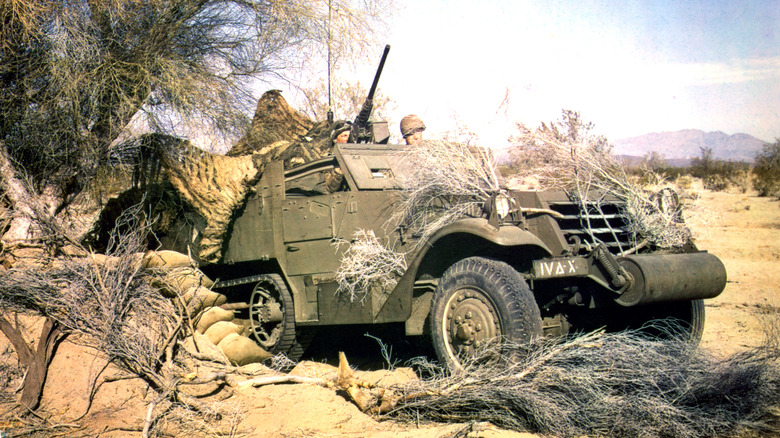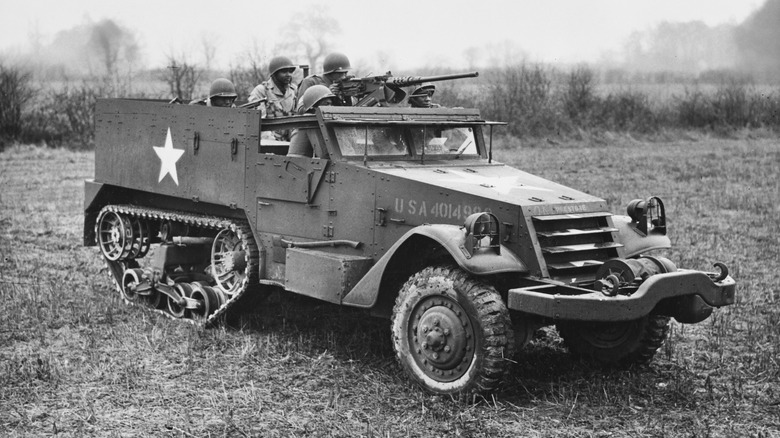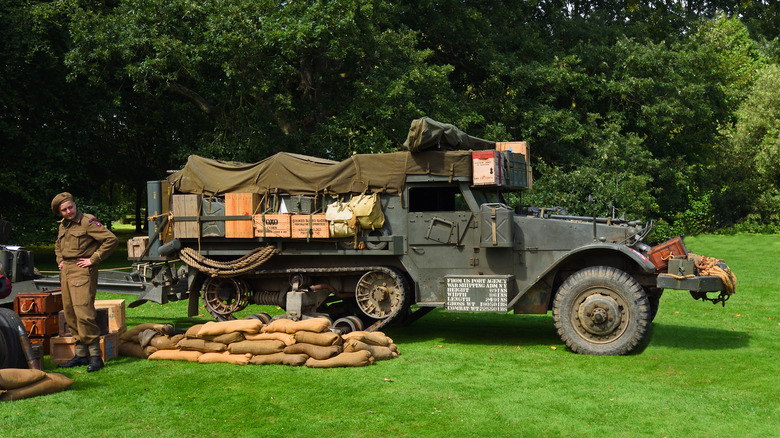What Was The M3 Half-Track And What Did It Do In WWII?
The outbreak of World War II made it clear to the U.S. that mechanized warfare was here to stay. Though the U.S. was not yet at war in 1939, it had to assess its military needs in case it got involved. One need that became obvious was for a vehicle that could be both a scout vehicle and an artillery mover. Ironically enough, the U.S. Army had acquired a half-track (wheels in the front, tank treads in the back) vehicle, the Model P17, from the French in 1931 as part of research and development. This led to the production of the M2 Half-Track in 1940 by the Autocar Company of Ardmore and the White Motor Company.
Almost immediately, the potential for the M2 to be modified and used as personnel carrier for troops became apparent. This led to the creation of the M3 Half-Track in 1941. The M3 was the big brother of the M2 with numerous modifications to fulfill its role as a troop carrier. Its rear compartment was 10 inches longer with 10 seats on the sides and three more in the cab. The vehicle came in around 20 feet long, around seven feet wide and could travel up to 45 mph. Firepower on the base M3 consisted of either a .30 or .50-caliber machine gun which came in handy during engagements. Besides transporting troops, M3's moved supplies, evacuated wounded soldiers, and served as communication hubs as needed.
It was half tank-half truck
One of the perks of the M3 platform was its adaptability to the needs of the mission and the evolving demands of WWII battlefields. The vehicle would see the addition of mine racks on the outside above the tracks, interior handles, and armored headlamps to name a few during its production run. One variant of the vehicle that saw extensive action in the war, was the M16 Multiple Gun Motor Carriage (MGMC). The M16 anti-aircraft version was equipped with four 12.7mm M2HB heavy machine guns and 5,000 rounds of ammunition and was part of the Lend-Lease Program.
The half-track was first deployed to the Philippines as part of the effort to resist the Japanese invasion of from 1941 to 1942. Feedback from the soldiers during the Philippines campaign resulted in improved suspension, while its service in the sand and deserts of North Africa saw the installation of more robust springs for both the wheels and the rear idler. By the time of the Allied invasion of Sicily on July 9, 1943, the M3 had developed into a reliable, lightly armored vehicle that could get combat troops up to the battleline, while providing additional firepower and equipment transportation.
Getting the job done
The M3 was produced in great numbers during the war, over 40,000, and saw service with not just the U.S., but also with Great Britain and the U.S.S.R. The vehicle and its variants, the M16 MCMC alone accounted for 3,500 of the total, found their way to Canada, Brazil, and the French. The platform proved reliable in its function and relatively easy to maintain, as opposed to its German counterparts, the Sd.Kfz.251 or Sd.Kfz.253 which were much more repair-intensive.
The M3 Half Track and its brother the M2 Half Track played significant roles throughout WWII. Whether it was transporting troops into combat, moving artillery into position, or serving as an anti-aircraft battery, the 40,000+ M3s delivered on its function and purpose. It was far from perfect with weak armor and an exposed open top that led to many casualties in both man and machine, but it did far more good than harm ultimately. Once the war ended, many of the half-tracks were either donated to Allied countries or sold outright with the entire platform being considered nearly obsolete by 1955.


